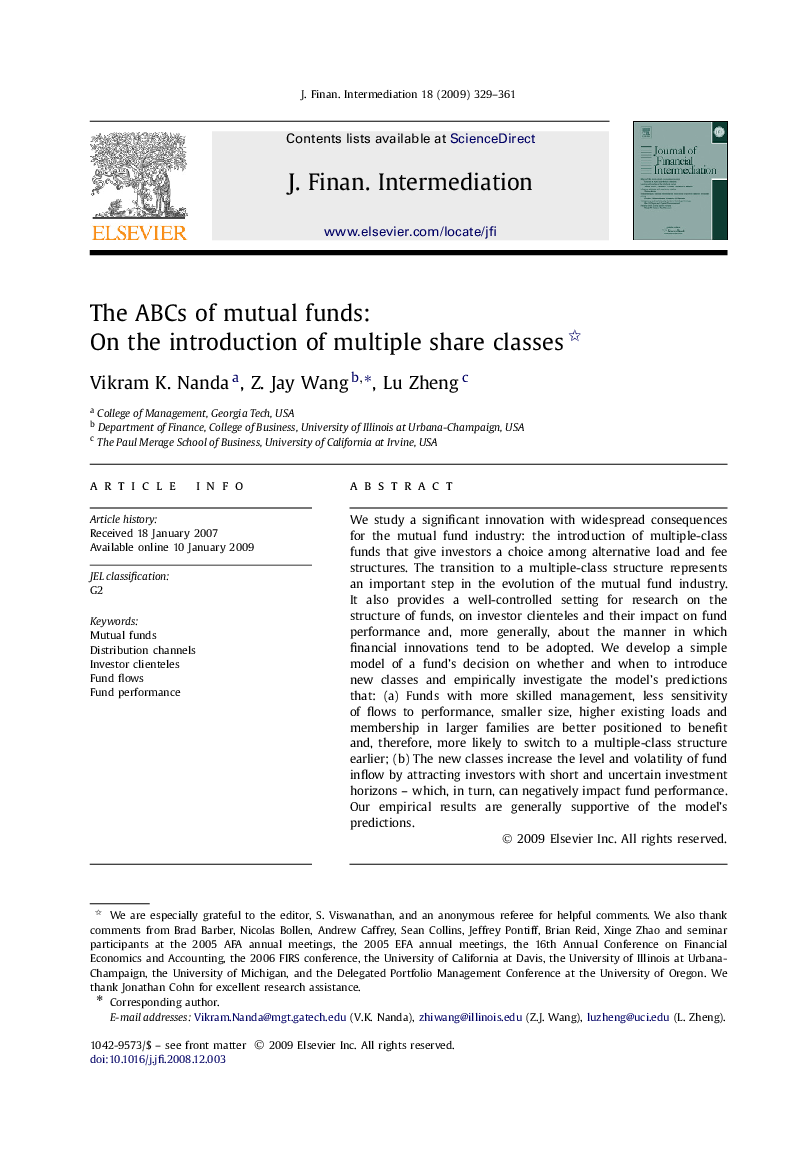| Article ID | Journal | Published Year | Pages | File Type |
|---|---|---|---|---|
| 960726 | Journal of Financial Intermediation | 2009 | 33 Pages |
We study a significant innovation with widespread consequences for the mutual fund industry: the introduction of multiple-class funds that give investors a choice among alternative load and fee structures. The transition to a multiple-class structure represents an important step in the evolution of the mutual fund industry. It also provides a well-controlled setting for research on the structure of funds, on investor clienteles and their impact on fund performance and, more generally, about the manner in which financial innovations tend to be adopted. We develop a simple model of a fund's decision on whether and when to introduce new classes and empirically investigate the model's predictions that: (a) Funds with more skilled management, less sensitivity of flows to performance, smaller size, higher existing loads and membership in larger families are better positioned to benefit and, therefore, more likely to switch to a multiple-class structure earlier; (b) The new classes increase the level and volatility of fund inflow by attracting investors with short and uncertain investment horizons – which, in turn, can negatively impact fund performance. Our empirical results are generally supportive of the model's predictions.
